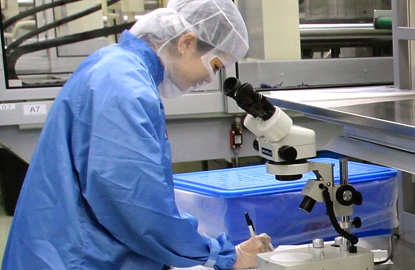
SINGAPORE (Jan 8): Singapore will be spending $19 billion of public money in science, research and innovation activities over the five years to 2020. This is the latest in a series of five-year plans that is designed to help lift scientific and innovation to help its economy grow.
Under plan RIE2020 (Research, Innovation and Enterprise), the National Research Foundation (NRF) will help coordinate investments in four technology domains: Advanced Manufacturing and Engineering; Health and Biomedical Sciences; Services and Digital Economy and lastly, Urban Solutions and Sustainability.
In addition, the money will also go towards building the pipeline of scientific talent, fund academic research, as well as to invest in local start-ups and other business entities, with a view that these key pieces will help one another grow.
Speaking at the launch of RIE2020 at the NRF office in NUS on Friday, Prime Minister Lee Hsien Loong says ”RIE will continue to be important in securing our future. It will help our workers thrive amid technological changes.”
The very first of such five-year plans was launched in 1991. Back then, it was called the National Technology Plan, with a budget of just $2 billion. Subsequent iterations saw hefty increases in spending, especially the jump from the $5 billion Science & Technology Plan of 2005 to 2010’s $13.55 billion plan.
“Our intention has not changed. It is to link the plan to the economy. This signals our preparedness to spend up to 1% of the GDP, based on our needs that we see. If we have good projects to fund, we will fund,” says Professor Low Teck Seng, CEO of NRF. Singapore’s GDP is estimated to hit more than $400 billion for 2015.
Health and Biomedical Sciences will get the biggest allocation of $4 billion, or 21% of the total. The government hopes to push on with the investments made over the past decade in developing a biomedical sector, as well as the closely related healthcare research.
Dr Benjamin Seet, executive director of the Biomedical Research Council, says the focus will now be more on driving better integration among the research institutes, hospitals and companies. “The fruits of research are ready to be reaped,” he says.
A few broad areas have been identified for the community to focus on. These are cancers, cardiovascular diseases, diabetes, infectious disease and neurological and sense disorders.
Investing in R&D to hopefully create the next blockbuster drug was earlier cited as a key economic goal for the biomedical sector. Going forward, the emphasis now has also shifted to finding ways to keep healthcare cost at a reasonable level for the people as well, says Seet.
'White space’
In RIE2020, the budget allocated to “White Space” or new and emerging sectors, has been increased by more than 50% to $2.5 billion from $1.6 billion previously.
Low explains that budgeting for White Space is crucial. For example, when RIE2015 was introduced, cybersecurity was not even an area of interest at all, he recalls.
However, when its importance was quickly recognised, the government was able to allocate funds from the White Space to help set up the Cyber Security Agency of Singapore.
It was also be to fund various labs jointly set up by other government bodies like the Infocomm Development Authority and private, international cybersecurity companies, to, say, train more cybersecurity professionals.
Besides cybersecurity, other areas that were funded using “White Space” included marine and offshore as well as satellite technology, says Low.
Two other sectors, Advance Manufacturing and Engineering, and Innovation and Enterprise, will each receive $3.3 billion, or 17%. While manufacturing may no longer be the largest contributor to Singapore's GDP, it is nevertheless still a key area.
But the requirement today is for manufacturers to be “innovation intensive” rather than “knowledge-intensive”. And instead of being mere suppliers to MNC, more local SMEs should work with researchers to develop better technological capabilities.
Innovation and Enterprise refers to the collective swathe of schemes and activities to help local companies from start-ups to SMEs and large companies. But while the previous focus was for R&D labs to “push” their output to the companies, this time round RIE2020 hopes companies can “pull” or attract interesting research in the labs to work towards revenue generation together.
Urban Solutions and Sustainability will receive $0.9 billion, to further research in areas of water, energy and land. While Singapore has made significant progress in critical areas like water treatment technology, more can be done.
For example, existing water recycling processes still require significant energy. One challenge is to reduce the energy. “We've got to dare to work towards Big Hairy Audacious Goals,” says Low, borrowing the term coined by management gurus to refer to long-term goals that can change the very nature of how business is done.
Meanwhile, $0.4 billion will be committed for Services and Digital Economy, which will look at how Singapore can weave together its existing and new IT capabilities as part of the Smart Nation programme. Researchers in this sector will also be looking at how technology will change the nature of some jobs.
For example, smarter machine learning capabilities has given rise to what is known as “AOKW”: automation of knowledge work in areas like finance and legal.
The release of RIE2020 comes at a time when the 30-member Committee on the Future Economy (CFE), chaired by Finance Minister Heng Swee Keat, has been formed to help Singapore chart its broader economic strategies for the years ahead.
Bernadette Foong, director of research and enterprise at the Ministry of Trade and Industry, assures that RIE2020 will work in conjunction with the CFE.
And even though certain goals and directions have been announced, flexibility will be key. “We will make sure we can be adaptable, work together and not necessarily lock down strategies,” she says.
Or as PM Lee puts it, “Ultimately, R&D is about the spirit of can-do. There are infinite possibilities waiting to be discovered.”